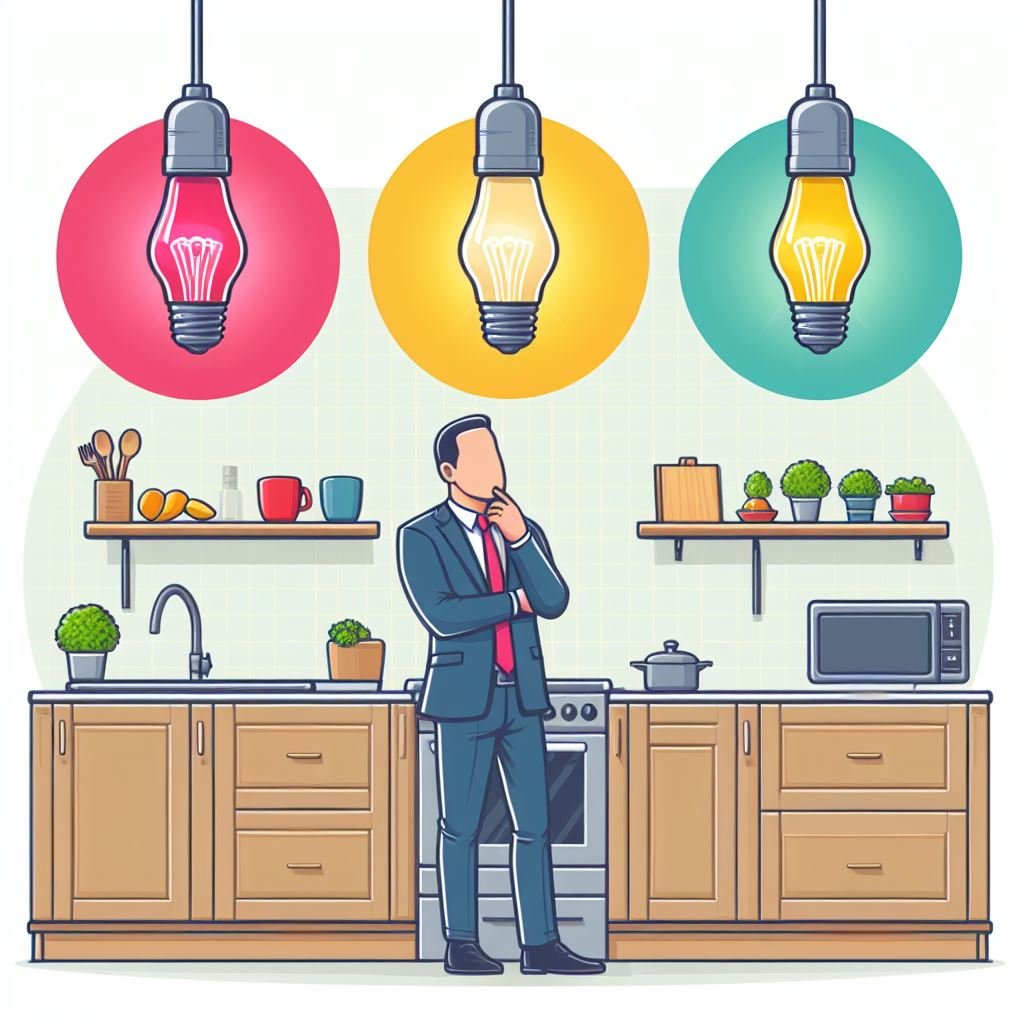When planning how to decorate your kitchen, picking the right lighting color is easy to forget, but it’s very important for making the right atmosphere. The color of the light not only changes how the room looks, but it also changes your mood and how well it works. This guide will focus on keeping things simple and easy to understand as we talk about how to choose the best lighting color for your kitchen.
Why kitchen lighting is important
There’s more to the kitchen than just cooking. It’s the heart of the house. The right lighting makes this area more useful and pleasant to be in. The right color temperature sets the scene for a cozy family dinner or a lively social gathering. Enough light is needed for tasks like chopping vegetables or reading recipes.
How to Understand Color Temperature
Understanding color temperature is important if you want to make smart choices about kitchen lights. Color temperature, which is measured in Kelvins (K), tells you how warm or cool a light is. Warm colors, like those with lower Kelvins (2700K–3000K), make a room feel cozy and welcoming. This makes them perfect for kitchens that you want to feel like home. Cooler colors (3500K–5000K), on the other hand, make rooms feel brighter and more energized, which makes them good for work areas like kitchens.
Which color lighting works best in different kitchen areas?
1. Lighting in general (ambient)
To light up the kitchen as a whole, moderate tones between 3500K and 4000K are a good compromise between warmth and brightness. This creates a friendly atmosphere without obstructing sight.
2. Lights for tasks
Work areas need focused lighting, like the stove and table. Choose cool white tones between 4000K and 5000K to improve vision and make it easier to do things like chopping, cooking, and reading recipes.
3. Adding Lighting
Adding accent lights to draw attention to certain things in your kitchen, like artwork or decorations, can make it look more elegant. Warmer tones (2700K–3000K) can make a room feel cozy while drawing attention to important features.
4. Lights under the cabinets
Putting lights under the cabinets not only makes the countertops easier to see, but it also makes the room look better. Tones that are neutral, between 3000K and 4000K, work well and add a modest accent to the room.
5. Lighting in the dining area
If your kitchen has an eating area, you might want to use a warmer color temperature (2700K–3500K) to make it a more comfortable place for family meals or get-togethers with friends.
6. Picking Out Bulb Types
The type of bulbs you choose affects more than just the color temperature; they also affect how bright the kitchen is generally. LED lights are a good choice because they use little energy and come in different color temperatures. Incandescent bulbs give off warm light but use more electricity. Even though fluorescent lights use less energy, they might not give most kitchens the warm atmosphere that people want.
Conclusion
When choosing the right color of lighting for your kitchen, you need to think about what each part of the room needs. You can make your kitchen well-lit the way you like it by learning about color temperature and how it affects mood and function. The right lighting color can turn your kitchen into a useful and aesthetically pleasing hub of your home. It can be the warmth of ambient lighting, the focus of task lighting, or the accentuation of decorative elements. Spend some time looking at your different choices and experimenting with different color temperatures until you find the perfect lighting solution that makes your kitchen a place you want to spend time in.






Leave a comment
You must be logged in to post a comment.